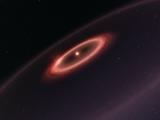Headlines and events archive
Displaying 701 - 750 of 1931
You may also find an archive of news published in the media which are related with the Instituto de Astrofísica de Andalucía - CSIC.
Pages

|
26/02/2018
From Mars Express to Exomars: a complete review of the red planet While waiting for the first data from the ExoMars 2016 TGO mission (ESA), international experts on the red planet meet in Madrid to review some current challenges and to prepare for the arrival and scientific exploitation of ExoMars |
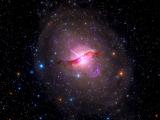
|
22/02/2018
POLAMI: a project to unravel the secrets of the supermassive black holes at the center of the galaxies Coordinated by the IAA, it brings together more than twenty researchers from five countries and is the first project of its kind: a long term study of the active galactic nuclei in polarized light |
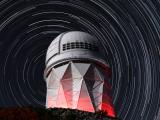
|
12/02/2018
Solving the Dark Energy Mystery: A New Assignment for a 45-Year-Old Telescope Kitt Peak National Observatory Prepares for the Dark Energy Spectroscopic Instrument |

|
05/04/2018 - 12:30
ESERO Spain, del espacio al aula Un proyecto de la ESA acogido en el Parque de las Ciencias para fomentar las vocaciones científico-tecnológicas en las primeras etapas educativas, haciendo uso del contexto del espacio. Manuel Roca & Domingo Escutia |

|
22/06/2018 - 12:30
What do environments can tell us about supernovae? The advent of Integral Field Spectroscopy (IFS) applied to supernova (SN) environmental studies have shown the potential of this technique to directly characterize the galactic environmental parameters at SN locations, compare them to those at different locations of the galaxy, and put constraints on progenitor stars for different SN types. Here, I will summarize past works and present ongoing efforts, including the PISCO compilation and the... Dr. Luis Galbany |

|
22/03/2018 - 12:30
Carbon Chemistry in Carbon-rich AGB stars The chemistry of carbon in evolved stars will be discussed from the observational and chemical modelling point of view. From the photosphere of the central star to the external layers of the circumstellar envelope different chemical processes allow the formation of different carbon molecules, among them carbon clusters and carbon chain radicals. The chemistry if not completely understood as many reactions are involved in the formation of... Prof. José Cernicharo |

|
24/05/2018 - 12:30
On the ultra-compact dwarf galaxy-nuclear star cluster connection Ultra-compact dwarf galaxies (UCDs) are predominatly found in the cores of nearby galaxy clusters, regions that are dominated by early-type galaxies, among them nucleated dwarf ellipticals. One of the favourite scenarios for the origin of UCDs is that they are isolated nuclei from threshed dwarf galaxies or maybe also from disrupted late-type spiral galaxies that fell into the clusters. In this scenario one would expect to find super... Dr. Michael Hilker |
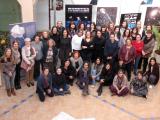
|
30/01/2018
International Day of Women and Girls in Science The Institute of Astrophysics of Andalusia joins the celebration of the International Day of Women and Girls in Science, which seeks to make visible the scientific work of women and promote vocations in girls |

|
15/02/2018 - 12:30
Can CALIFA tell us something about the cosmic evolution of the star formation rate and stellar mass of the Universe? We investigate the cosmic evolution of the absolute and specific star formation rate (SFR, sSFR) of galaxies as derived from a spatially-resolved study of the stellar populations in a set of nearby galaxies from the CALIFA survey. The results show again the uniqueness of the CALIFA survey to characterize the cosmic evolution of the spatially- resolved SFR and stellar mass of galaxies. Also the success of the fossil record of the stellar... Prof. Rosa González |
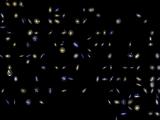
|
03/01/2018
Library of galaxy histories reconstructed from motions of stars The CALIFA survey allows to map the orbits of the stars of a sample of 300 galaxies, a fundamental information to know how they formed and evolved |
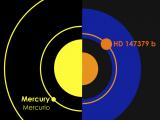
|
18/12/2017
CARMENES instrument finds its first exoplanet The planet HD 147379 b, with a mass slightly higher than Neptune, orbits a very close star |
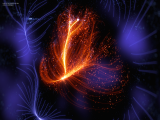
|
15/03/2018 - 12:30
Navigating the Universe : « Cosmic Flows » program I will present the evolution of the “Cosmic Flows” program spanning ten years of research since its inception in 2006. From CF1 to the latest CF3 data-set, an order of magnitude in the number of observational galaxy distances is gained, meanwhile the cosmographied volume is multiplied by 150. A theoretical framework has been developed so as to accommodate and analyze the data. This includes the Bayesian reconstruction tools of the Wiener filter... Professor Hélène Courtois |

|
07/03/2018 - 12:30
Mesa redonda: "Luces y sombras en la carrera científica de las mujeres. Hacia una igualdad efectiva entre hombres y mujeres." Componentes de la mesa: Laly Gallego, contratada predoctoral Marta González, contratada postdoctoral Rosa González, primera profesora de investigación del IAA Rosa de Castro, gestora de proyectos europeos Nuria Rico, profesora de la ETS de Ingenierías Informática y de Telecomunicaciones de la UGR. Lucia Estevan, contratada FPU de la UGR y activista de la plataforma @huelga8mgranada Coordina: Isabel Márquez, vicedirectora del IAA Mesa redonda |

|
22/02/2018 - 12:30
LIGHT AND SHADOW IN THE GALACTIC CENTER The luminous S-star cluster in the Galactic center allows us to study the physics close to a super-massive black hole including distinctive dynamical tests of general relativity. Our best estimates for the mass of and the distance to Sgr A* is currently obtained using the three shortest period stars. Additionally, we aimed at a new and practical method to investigate the relativistic orbits of stars in the gravitational field near Sgr A... Prof. Andreas Eckart |

|
22/11/2017
Artificially lit surfaces on Earth increase more than 2% per year Light pollution, produced mainly by excessive night lighting or incorrect lighting, is an energy waste that endangers human health and ecosystems. Between 2012 and 2016 artificial night lighting has increased by 9.1%, despite the use of more efficient lighting systems |
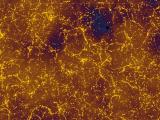
|
20/11/2017
MultiDark-Galaxies: a free access virtual universe An international team of astronomers has created a theoretical model that allows to recreate, in a broad and detailed way, the formation and evolution of the universe. The work provides an unprecedented test bench for new theories about the cosmos |

|
25/01/2018 - 12:30
Diffuse Ionized Gas in CALIFA (and MaNGA) galaxies We use spatially resolved spectroscopy from the CALIFA survey to study the nature of the line emitting gas in galaxies of different Hubble types, focusing on the separation of star-forming (SF) regions from those better characterized as diffuse ionized gas (DIG). The diagnosis is carried out in terms of the equivalent width of Ha (W_Ha). Three nebular regimes are identified: (1) Regions where W_Ha... Dr. Roberto Cid Fernandes |
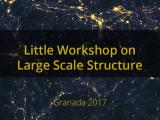
|
20/11/2017 - 24/11/2017
Little Workshop on Large Scale Structure Granada |

|
18/01/2018 - 12:30
Dust belts around Proxima Centauri. First results from a multi-department project at the IAA In this talk I will present the results of an exploratory program we carried out at the ALMA Observatory soon after the discovery of a terrestrial planet candidate in a temperate orbit around Proxima Centauri, the star closest to our Sun. Our ALMA observations reveal the presence of a belt of dust orbiting the star at distances ranging between 1 and 4 au, approximately. This dust might trace a small-scale analog to our solar system's Kuiper Belt... Dr. Guillem Anglada |

|
16/11/2017 - 12:30
Surprising characteristics of the dwarf planet Haumea revealed by a stellar occultation The solar system currently contains 8 planets and 5 dwarf planets. Among the 5 dwarf planets, 4 of them dwell in the transneptunian region, and among the transneptunian dwarf planets, the only one that remained poorly characterized was Haumea. This was because all other dwarf planets had been visited by spacecraft or had produced stellar occultations which allowed us to determine some of their basic physical properties with accuracy. The only... Dr. Jose Luis Ortíz |

|
16/10/2017 - 20/10/2017
Astrorob 2017 - Fifth Workshop on Robotic Autonomous Observatories Mazagón (Huelva) |

|
30/11/2017 - 12:30
GRB 170817A: a peculiar low-luminosity short gamma-ray burst associated with a NS-NS merger gravitational wave signal Short-duration gamma-ray bursts (sGRBs) have long been proposed to be produced in systems involving the coalescence of double neutron stars (NS-NS), and the observations of sGRB afterglows and host galaxies are consistent with such a conjecture. Based on the estimated event rate density derived from previously observed sGRBs at cosmological distances, the chance of detecting a sGRB within a small volume for detectable NS-NS mergers by advanced... Dr. Binbin Zhang |

|
02/11/2017 - 12:30
W170817/GRB 170817A/AT2017gfo: A Tryptich of Rosetta Stones for Compact Object Astrophysics On the 17th of August 2017, an astronomical event occurred which represents a watershed in our understanding of neutron stars. The LIGO and Virgo gravitational-wave observatories detected the first compact binary inspiral produced by two neutron stars, which was followed about two seconds later by a short GRB, labelled GRB 170817A, detected by the GBM instrument on Fermi. The detection by all three GW observatories allowed the error region to be... Dr. David Alexander Kann |

|
11/01/2018 - 12:30
Dynamics and properties of gas at the Center of the Galaxy In the central parsec of the Milky Way Galaxy the environment of the super-massive black hole (SMBH) presents a complicated composition that includes a very young star cluster mixed with qby tidally stretched clouds of ionized gas (the Minispiral). The Galactic Center's inner few tens of arcseconds have been observed at high resolution with Keck for 20 years, with the primary goal of monitoring stars orbiting the SMBH. This unique baseline of... Dr. Anna Ciurlo |
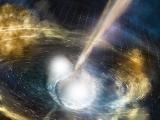
|
16/10/2017
The merging of two neutron stars allows the first simultaneous study in light and gravitational waves This is the fifth detection of gravitational waves, but the first in which the counterpart in electromagnetic waves is located and studied. Researchers at the Institute of Astrophysics of Andalusia (IAA-CSIC) take part in several international studies on the phenomenon |
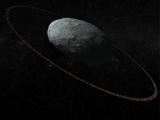
|
11/10/2017
Haumea, the most peculiar of Pluto companions, has a ring around it The trans-neptunian belt contains four dwarf planets, among which Haumea stands out for its extremely elongated shape and rapid rotation. A stellar occultation makes it possible to establish main physical characteristics of heretofore this little known body – among which most surprising was presence of a ring |
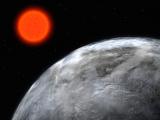
|
04/10/2017
CARMENES instrument proves its ability to find Earth-like planets CARMENES, a visible and infrared spectrograph operating from the Calar Alto observatory (Almeria), is studying a sample of three hundred stars in search of Earth-like planets. The first results of the visible channel, derived from the study of seven planetary systems, show its perfect functioning |

|
19/10/2017 - 12:30
Bringing science to kids and general public at the Observatoire de la Côte d'Azur It is important to transmit the science developed in a research institution to the public. This transmission helps to increase the scientific culture of the general public, and also can help to awake scientific vocations in the kids. During this talk I will present several actions carried out at the Observatoire de la Côte d'Azur (Nice, France), to bring astronomy to the school children and also to the general public. I will talk about the... Dr. Olga Suarez |

|
26/10/2017 - 12:30
The Supernovae that Accompany Gamma-ray bursts Energetic supernovae have been seen to occur at the same spatial locations as long-duration gamma-ray bursts (GRBs). These so-called gamma-ray burst supernovae (GRB-SNe) are bright and energetic, and their spectra indicate that material within in the supernova outflow moves at tens of thousands of kilometres per second. The first GRB-SN was observed in 1998, with only 50 in the intervening years. Over the past two decades, the physical... Dr. Zach Cano |

|
05/10/2017 - 12:30
Dust evolution in the interstellar medium Dust grains play a crucial role in many physical and chemical processes in the interstellar medium (ISM) and in protoplanetary disks (PPDs). In the ISM, dust properties influence, for example, the formation and temperature of the major molecules in molecular clouds. It is therefore important to characterise the grain size, structure, shape and material composition in all phases of the ISM. Observations of the dust SED and extinction give... Dr. Melanie Köehler |
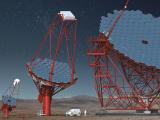
|
27/09/2017
The Cherenkov Telescope Array (CTA), which will observe the most energetic universe from Chile and La Palma, publishes its scientific objectives With more than a hundred telescopes, the CTA is the largest project of study of the cosmos to high energies conceived. The project, which involves the Institute of Astrophysics of Andalusia (IAA-CSIC), is under construction and will start operating in 2024 |
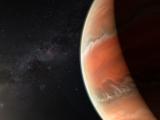
|
14/09/2017
The unprecedented view of an exoplanet´s atmosphere Using the FORS2 instrument on ESO’s Very Large Telescope, astronomers have detected for the first time the presence of a metal oxide in the atmosphere of an exoplanet. This discovery opens the doors for detailed study of chemistry in exoplanetary atmospheres |

|
23/11/2017 - 12:30
Fighting in Maya ruins: Data Engineering, Data Science, computation clusters and the trans-neptunian search tool IAA is sitting under a gold mine of data, achieved in past observing campaigns, that will be increased with the data coming from next instrumentation. A tool that can exploit the wealth beneath our feet is the Engineering and Data Science (EDS). This lecture will introduces the EDS and its application on preliminary analysis on a concrete astronomical problem: the search of trans-neptunian objects. Two of the tools used in this analysis will... Dr. Rafael Morales |

|
09/11/2017 - 12:30
Conclusions after the first work of Master's degree in Data Science at the IAA Advanced algorithms of automatic learning and/or massive data processing, applied to astronomical data, promise to provide very pleasant surprises. Both types of algorithms are part of the field of Data Science research. Taking advantage of the fact that Granada has a worldwide reference group in Data Science (Soft Computing and Intelligent Information Systems http://sci2s.ugr.es/, directed by Francisco Herrera), a collaboration with the IAA... Dr. Rafael Morales |

|
27/09/2017 - 12:30
High-z proto-clusters with the GTC The study of high-z proto-clusters are important for constraining several cosmological parameters. These clusters are hard to find as they do no yet emit the strong X-ray emission typical of the local clusters. These proto-clusters are however found either around strong QSO’s or more often around strong star-forming galaxies. Incidentally, they are also found around strong sub-millimetre galaxies. We have undertaken a search for Lyα sources... Prof. Jose Miguel Rodríguez-Espinosa |
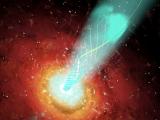
|
14/08/2017
The IAA will lead two of the five most advanced studies on supermassive black holes in 2018 The 66 antennas of the ALMA observatory join the Horizon of Events (EHT) telescope for the study of supermassive black holes. Five observation proposals have been approved for 2018, two of them coordinated by the Institute of Astrophysics of Andalusia (IAA-CSIC) |
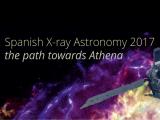
|
23/10/2017 - 25/10/2017
Spanish X-ray Astronomy 2017: the path towards Athena Granada |
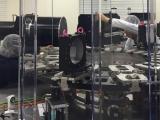
|
21/07/2017
First light for MEGARA instrument on the Gran Telescopio Canarias The new 3D spectroscopy instrument, in which the IAA-CSIC participates, will make its first observations next Monday |
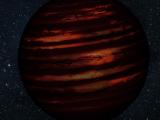
|
20/07/2017
Milky Way could have 100 billion brown dwarfs Brown dwarfs are objects intermediate in mass between stars and planets, with masses too low to sustain stable hydrogen fusion in their core |
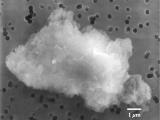
|
25/09/2017 - 28/09/2017
Dust and Ice Particles Spectroscopy and Scattering Granada |

|
16/10/2017 - 12:00
SKA Science Data Centres: A Platform for Global Astronomy M. Wise: The SKA is an ambitious project to construct one the world’s more powerful radio telescopes and enable transformational science across a wide range of research areas. Based on current projections, the SKA Observatory, once operational, is expected to produce an archive of standard data products with a growth rate on the order of 300 petabytes per year. Although the challenges associated with populating and maintaining the SKA science... Prof. Michael Wise & Prof. Ian Wird |
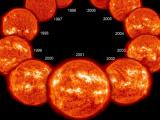
|
04/07/2017
Improved Representation of Solar Variability in Climate Models New reference data set for model intercomparison studies published |

|
21/09/2017 - 12:30
Analogue spacetimes Analogue spacetimes, (as opposed to general relativity spacetimes), arise when applying the mathematics of differential geometry to generic physical systems. As long as the perturbations have finite propagation speed, then the causal structure can be summarized by propagation cones, similar to the light cones of general relativity; thereby defining a conformal structure. Often one can go further and define an analogue Lorentzian metric.... Prof. Matt Visser |

|
14/09/2017 - 12:30
Hydrodynamical models of planetary nebulae with [WC] central stars High-resolution, long-slit spectroscopic observations of two planetary nebulae, M1-32 and M3-15 are presented. The observations were obtained with the 2.1-m telescope at the OAN- SPM, and MES spectrograph. M1-32 shows wide wings on the base of its emission lines, M3-15 has two very faint high-velocity knots. To model M1-32 and M3-15 we built a 3D model consisting in a jet interacting with an equatorially concentrated slow wind, emulating the... Jackeline Rechy Garcia |

|
07/09/2017 - 12:30
High resolution radio imaging of nearby star-forming galaxies: on the way to SKA The Square Kilometer Array (SKA) will be a key instrument in the study of our local Universe. In particular, by virtue of its high sensitivity (both to point sources and diffuse low surface brightness emission), angular resolution and the frequency ranges covered, the SKA will undertake a very wide range of astrophysical research in the field of nearby galaxies. By surveying nearby galaxies of all types with microJy sensitivity and sub-arcsecond... Prof. Antxon Alberdi |

|
20/06/2017
Red Dots: The Live Search for Terrestrial Planets around Proxima Centauri Continues The Red Dots campaign will show how astronomers look for planets around Proxima Centauri, Barnard star and Ross 154 |

|
17/05/2017
Levels of light pollution soon to double if color of light is not taken into account Light pollution – produced by an excess of or incorrect nocturnal lighting – doesn’t just waste of energy, it also jeopardizes the health of human beings and ecosystems. Recent study shows importance of color of lighting, which most widely used sensors are blind to |
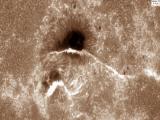
|
06/06/2017
IMaX, an instrument developed in Spain, analyses in detail the behavior of the Sun in full fledged activity IMaX, a magnetograph developed for the Sunrise mission, observed the Sun from a stratospheric balloon above the Arctic. A precursor to SoPHI, which will equip the Solar Orbiter mission, IMaX has made key breakthroughs to understand the magnetic field which determines the behavior of the Sun |
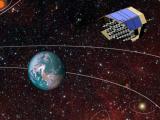
|
21/06/2017
Green light to PLATO, ESA's exoearth hunter With this mission Europe will lead the search for potentially habitable exoplanets. The Institute of Astrophysics of Andalusia participates in the project |
